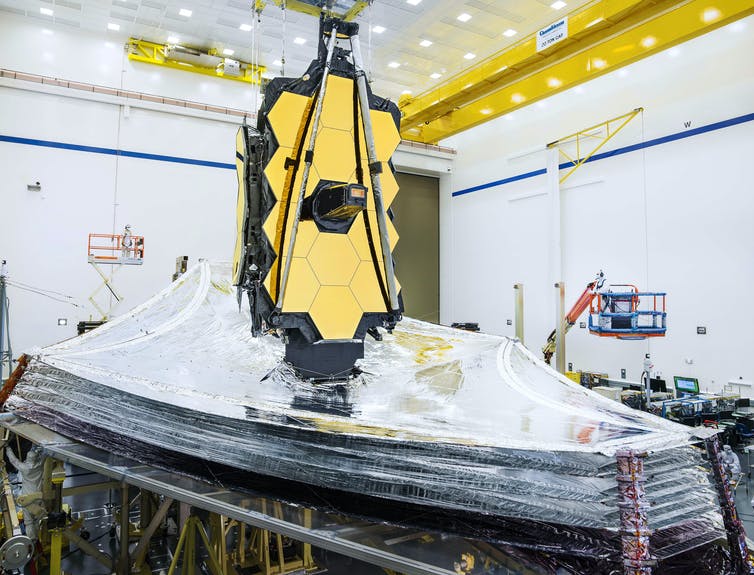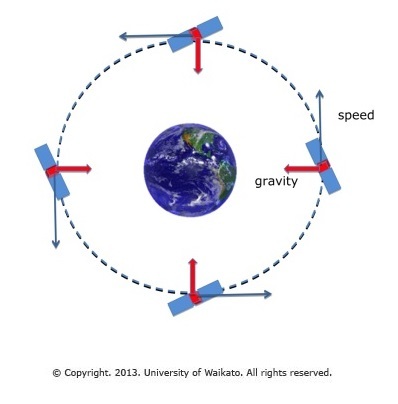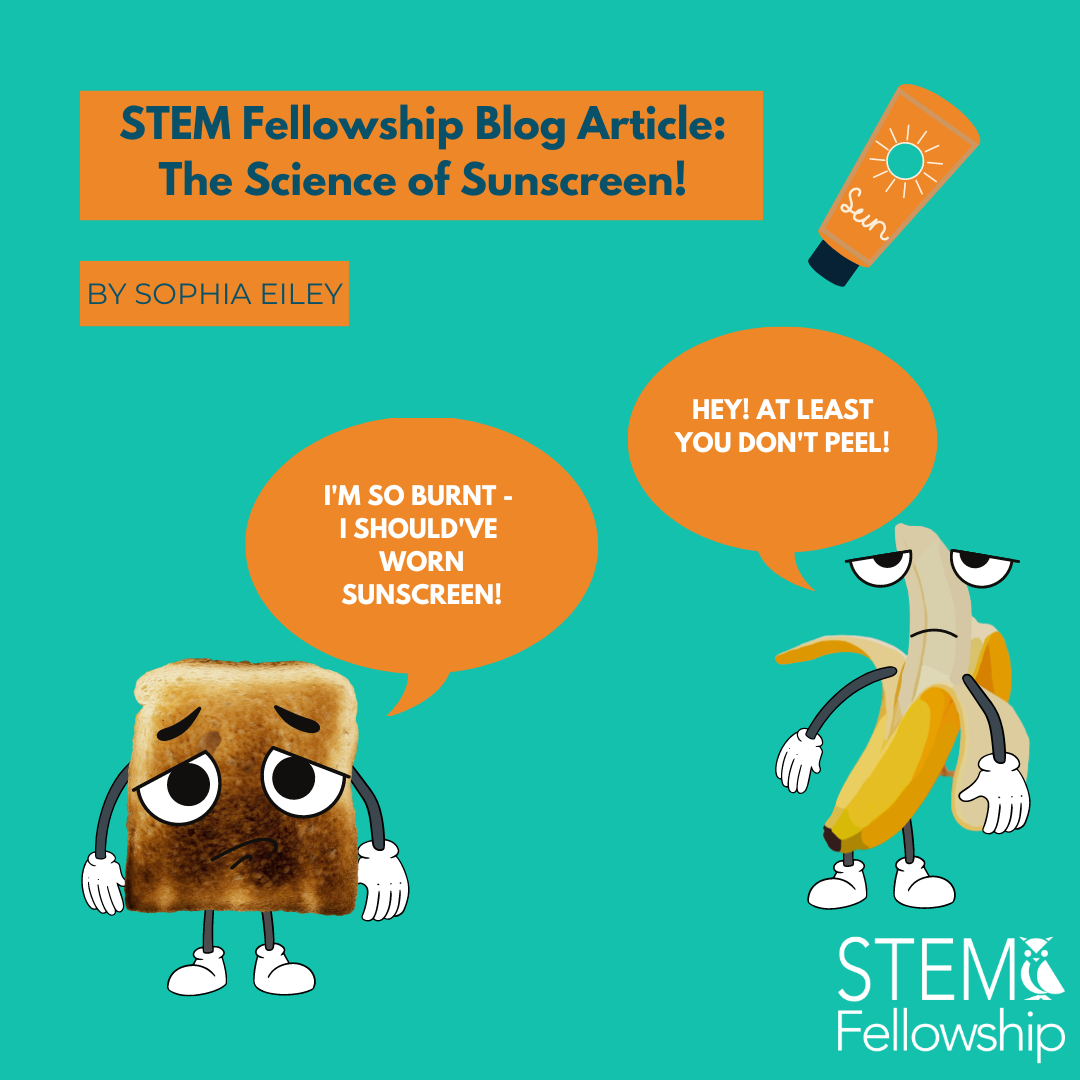By Vincent Jia
In my previous article, I introduced the basic structures and main functions of the James Webb Space Telescope. If you haven’t read my first article about the James Webb Space Telescope, click here to read it first. In this article, we are going to further explore the observatory by focusing on its orbits.
Before we get into the details, first let’s discuss what James Webb needs as an infrared telescope. Infrared light can be perceived as heat, and the telescope will be observing faint infrared signals from extremely distant objects that were created at the beginning of the universe. So, we have to make sure that the observatory is away and protected from any heat source that can potentially disrupt its missions. That’s why there are those huge aluminium sun shields in place to sever heat from the telescope. But the shields alone are not enough. The telescope also has to be a certain distance from the sun, otherwise the sun radiation would be too much for the shields to handle. Furthermore, the telescope needs to be in constant contact with the Earth, thus requiring it to not be blocked by any celestial body. The best way to achieve that is to make the telescope orbit around the Sun with the Earth.
In two-body systems like the Sun and the Earth, there are points where the gravitational influences of the two bodies cancel out, causing them to stay at specific spots. These points are called Lagrangian Points. There are five of them in every two-body system. The James Webb is located at the Second Lagrangian Point or the L2 point. If a third object is placed in any of the points, it tags along as the entire system orbits. Therefore, putting the telescope at L2 ensures constant communication with Earth even as Earth orbits the Sun. But how is it possible for objects to stay at L2?
To answer this question, we need to first understand the fundamentals of orbital systems. The reason why objects are able to orbit around other objects is because of two main factors: centripetal force and velocity. In order to construct circular motions, the object needs to have an initial velocity that gives it speed to move around. But merely velocity is not enough. The object must also be constantly pulled by a force inward that bends the velocity vector into a circular orbit. That force is perpendicular to the velocity vector, and is called the centripetal force. Another way you can think about it is if you attach a tennis ball to the end of a string and swing it, you will first swing it to give some velocity, and the tension force on the string will act as the centripetal force pulling the tennis ball inward, creating a circular orbit at the same time.
If you look at the L2 point, you will see that it is a bit farther away from the Sun than the Earth is. Thus, when it orbits around the Sun, it is attracted to the gravitational forces of both the Sun and the Earth. In astrophysics, the centripetal force is often provided by gravity. What is so special about the L2 point is that the gravitational pulls from the Sun and the Earth add up together to the centripetal force that keeps it in orbit around the Sun. The centripetal force is, therefore:
Fc = Fs(Gravity of the Sun) + Fe(Gravity of the Earth)
As a result, any object placed at the L2 point can orbit around the Sun with the Earth. But, due to real-life complications and other various reasons, the James Webb Space Telescope is not perfectly placed at L2.

If you are interested in The James Webb Space Telescope, please consider viewing this website. If you want to learn more about circular motions and orbital mechanics, here are some resources from Khan Academy.
Reference List
- Goddard Space Flight Centre. Orbit – Webb/NASA [Internet]. NASA. NASA; 2021 [cited 2022May25]. Available from: https://webb.nasa.gov/content/about/orbit.html
- Ready C. How James Webb orbits “nothing” [Internet]. YouTube. Launch Pad Astronomy; 2022 [cited 2022May25]. Available from: https://youtu.be/ybn8-_QV8Tg
- Smale A. Imagine the universe! [Internet]. NASA. NASA; 2020 [cited 2022May25]. Available from: https://imagine.gsfc.nasa.gov/features/yba/CygX1_mass/gravity/circular_motion.html
- Li Y. 卫星天宫一号为什么要坠落?如何坠落?李永乐老师6分钟解释飞船变轨 [Internet]. YouTube. 2018 [cited 2022May25]. Available from: https://youtu.be/pyaOOyammQM
- Li Y. 三体和嫦娥四号有什么联系?中继星鹊桥在拉格朗日点的哪个位置?李永乐老师带你了解嫦娥工程 [Internet]. YouTube. 2018 [cited 2022May25]. Available from: https://youtu.be/-QZ3bjRTpng
Yechun (Vincent) Jia is a grade 9 student at Hillfield Strathallan College with a love for physics, math, biology, astronomy, international relations and history. Active in STEM contests and debate tournaments, he is passionate about finding connections between critical thinking in STEM and philosophical discussions. Vincent believes that everyone has the potential to flourish in STEM and make their own unique changes to the world. He hopes that his writings will empower youth to further their passions in STEM.
[/et_pb_text][/et_pb_column][/et_pb_row][/et_pb_section]









